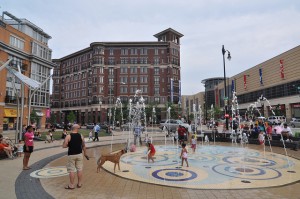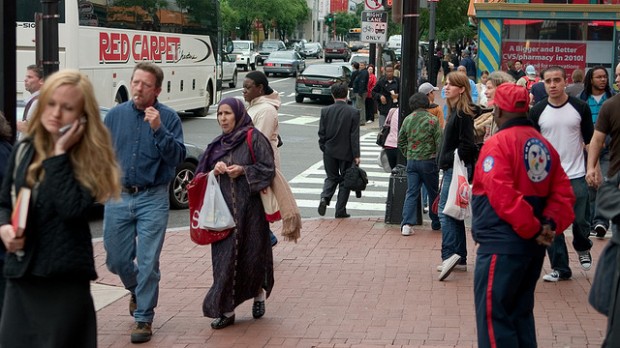Lamenting over D.C.’s changing mix of residents (read: more white people, less black people) have raised some questions: isn’t this just increased diversity? And isn’t that supposed to be a good thing?
Courtland Milloy included this interesting point in a Tuesday column:
“Surveys show that when asked, blacks, on average, say the ‘ideal’ neighborhood racial composition would be about 30 to 35 percent black,” said Roderick J. Harrison, an associate professor of sociology and anthropology at Howard University.
Why? Because blacks derive significant benefits from living among middle-class white people, such as better city services, better schools and higher-quality stores.
Moreover, 30 percent is large enough for blacks to create a comfort zone that blunts the effects of white prejudice but small enough not to trigger white flight.
A 2009 study by researchers at New York University noted that “the strongest predictor of resistance to racial integration among whites is prejudice, whereas the strongest predictor of black avoidance of white neighborhoods is fear of discrimination.”

Flickr: Bill McNeal
Ward 1, which includes neighborhoods such as Columbia Heights, is D.C.'s most racially diverse area.
So which D.C. neighborhoods most reflect this “ideal mix?” It seems Ward 1 comes closest; although no one group maintains a majority there, 40.8 percent of residents are white, 31.5 percent are black and 20.8 percent are Hispanic or Latino. As for the socioeconomic makeup of the ward, 41 percent of households make $75,000 or more a year; 28 percent make $35,000 to $74,999 a year; and 31 percent make below $34,999.
But you still have to live in the neighborhood in order to derive the benefits that more whites and richer people bring. Nordlie1, a commenter on a DCentric post explaining why so many black residents have left D.C., writes:
“Losing a majority (of black folks) ” “More diverse (white folks)” = (politically correct:) gentrification. All the same. Bad thing when it displaces poor black people.




